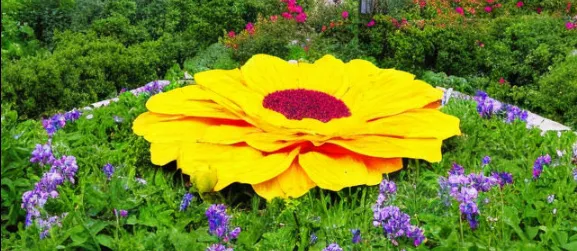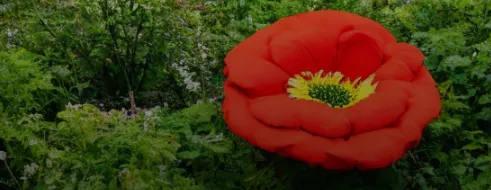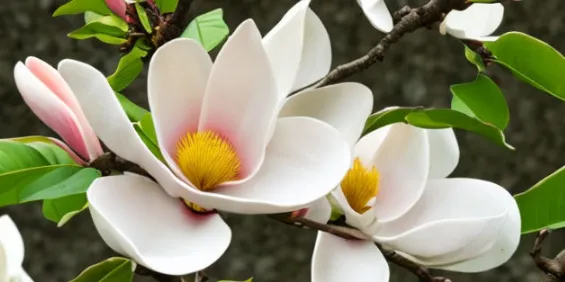A Bouquet of Meaning: Flower Colors Unveiling Nature's Artistry

The beauty of flowers has been appreciated for centuries, but only recently have scientists begun to understand the significance behind flower colors and how they fit into nature’s intricate web. This essay aims to investigate the biology behind flower colors and explore whether these colors have a specific biological purpose or if they are randomly chosen by nature.

The thesis of this essay is that flower colors serve a biological purpose within nature, but we must first examine the scientific evidence in order to determine if there is any specific meaning behind the colors seen in flowers today. This research is significant because understanding flower colors could uncover new insights into how certain species evolved or adapted over time, as well as provide clues on how different species interact with one another in their habitats.

The biological significance behind flower colors can be broken down into two primary categories- attractants and protection. From an attractant standpoint, brightly colored flowers use their vibrancy to lure potential pollinators such as bees, birds, and butterflies. Brightly colored petals also impart a visual message to pollinators about what type of reward awaits them if they decide to visit the plant for nectar or pollen. Additionally, some researchers believe that certain plants use color pigments to draw attention away from less appealing parts such as thorns or toxic sap.

In addition to attracting pollinators, flower colors can also serve as a form of protection from herbivores or other enemies looking to feed on the plant’s nectar or pollen stores. For example, while dark red petals may attract pollinators due to their sweetness, they may also signal danger by warning animals away from thorns or spines found on certain plant species. Similarly, some flowers display an array of bright colors which can make them difficult for predators or herbivores to find within their natural environment.

One way to further prove that flower colors represent something biologically is through the study of genetics. Researchers have discovered that certain genes are responsible for the production of pigments in flowers, such as the gene for the red pigment anthocyanin. Studies have also shown that these genes can be selectively bred or genetically modified to produce different color variations in flowers. This provides strong evidence that flower colors are not just random characteristics, but are instead the result of specific genetic makeup and evolution.

Understanding the biological significance behind flower colors can have many benefits for the general public. For example, it can lead to a greater appreciation for the beauty and diversity of flowers, as well as a deeper understanding of how different species interact in their natural habitats. Additionally, this knowledge can be used in the field of horticulture and agriculture to improve crop yields and create new and more colorful varieties of flowers. Furthermore, it can be applied in conservation biology to help protect endangered species and their habitats.

Possessing knowledge about the biological significance of flower colors can have many implications. For example, it can aid conservation efforts by helping to identify and protect threatened or endangered species. Additionally, this knowledge can be used to develop new and more efficient methods of crop pollination, leading to increased food security. Additionally, understanding the biology behind flower colors can inform the development of new treatments for diseases that affect plants, which can have significant implications for global food security and biodiversity. Furthermore, this knowledge can also be used in the field of horticulture to create new and more diverse varieties of flowers for ornamental and aesthetic purposes.

In addition to the scientific evidence, there are also philosophical implications behind the idea that the color of flowers are "designed" for a purpose. This concept suggests that nature has a certain intention or plan, rather than everything being a result of random chance. This idea can be seen in the way that the colors of flowers serve both a biological necessity and metaphorical meaning. For example, the bright and showy colors of certain flowers may symbolize the idea of fertility and new beginnings, while the muted and subtle colors of other flowers may symbolize the idea of humility and simplicity. This suggests that not only do the colors of flowers serve a biological purpose, but they also hold deeper symbolic meaning.

In conclusion, this essay has examined the scientific evidence available to determine whether the color of flowers serves any biological purpose or if it is simply a random characteristic chosen by nature. The evidence suggests that flower colors are not random, but instead serve specific biological functions such as attracting pollinators and providing protection from herbivores. Additionally, the study of genetics has provided further proof that flower colors are the result of specific genetic makeup and evolution. Understanding the biological significance of flower colors can have many benefits for the general public and can be applied in fields such as horticulture, agriculture, conservation biology, and even philosophy.
#FlowerColors #Biology #Genetics #Pollinators #Herbivores #Horticulture #Agriculture #ConservationBiology #Philosophy #Attractants #Protection #Vibrancy #Nectar #Pollen #Evolution #Anthocyanin #BrightColors #DarkColors #RedPigment #GeneticallyModified #Fertility #NewBeginnings #Humility #SymbolicMeaning #GlobalFoodSecurity #Biodiversity
